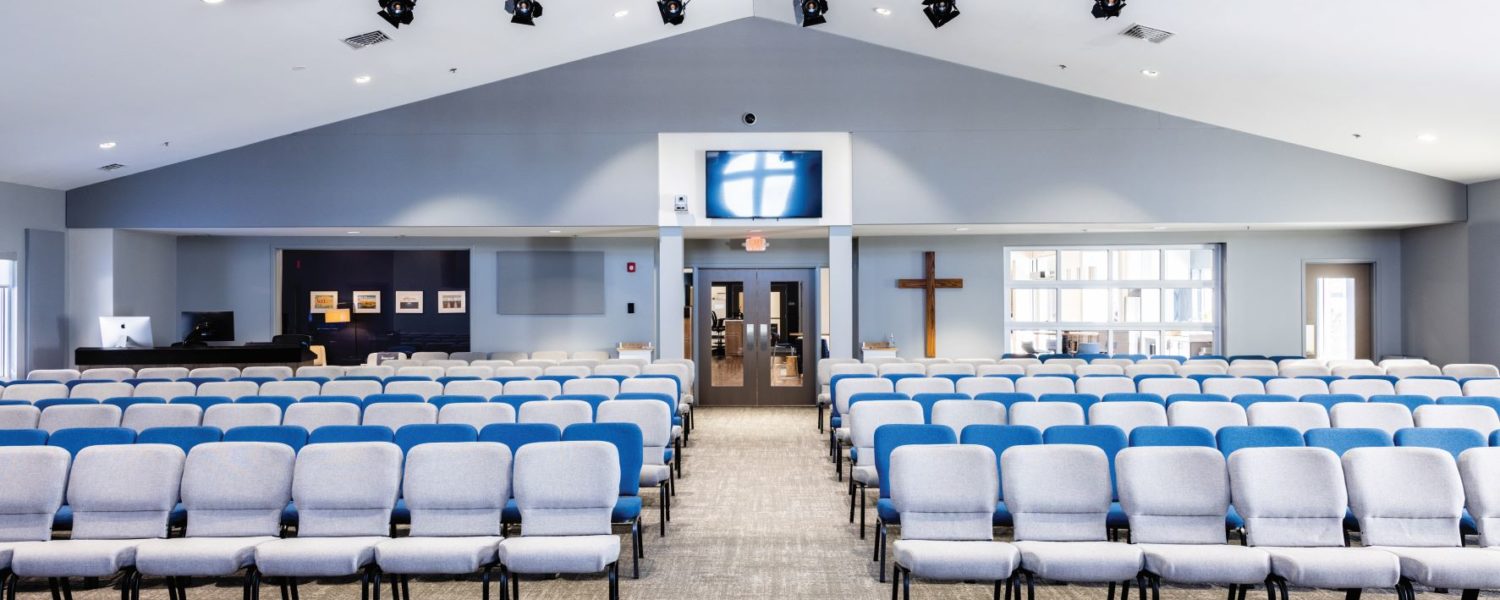By Joe Dudeck
Imagine this. It’s another Sunday morning. The doors open to your church, and it comes alive with the beautiful sights and sounds of people filling your space. Young and old, men and women, long-time members and first-time attendees—all standing together to meet, greet, talk, and connect with one another.
But in this scenario, it’s not your lobby they’re filling. It’s not your café. It’s not your Sunday school rooms, your children’s check-in areas, or your fellowship halls.
Everyone’s in your sanctuary—in the place you worship—standing because there’s not a chair in sight. There’s not one pew, one folding chair, one bench—nothing but open space. It’s ideas like this that can cultivate community in any congregation.
Can you imagine it? Could you even begin to visualize your sanctuary without one seating option?
It may seem absurd, but that’s actually how people worshipped in the church just a few centuries ago. In fact, some people believe this had a positive effect on their church culture.
According to James White, author of Church Architecture: Building and Renovating for Christian Worship:
“Throughout most of the history of Christian worship . . . there were no pews or chairs. Not until the fourteenth century did seating gradually encroach upon the open space where the congregation stood and walked about during worship. Until that time, the people were on their feet and could go where something was happening . . . . The congregation was mobile and the interior of the church was not regimented into fixed rows of inflexible pews.”
So how about that? In a world where seating clearly existed, churches deliberately chose to keep them out of their main worship spaces. Instead, people were encouraged to be active during worship, to move freely throughout the space, and to engage with others around them.
In his ebook, From Pews to Podcasts: What Technology Wants for the Church, Adam Graber explores how technology has shaped—and continues to shape—church culture.
In the second chapter, “Churches Without Chairs,” Graber tackles the topic of adding seating to churches and explores how this adjustment to a building’s furnishings radically impacted the direction of the church.
Here are two key concepts that Graber touches on that may help guide your church through its seating decisions:
- Embrace Change
Within building church culture and architecture, seating is often the soapbox from which building committees and congregants make impassioned pleas not to change. Some churches vow to never get rid of their pews. Other churches stand by their theater seats, as if this is the superior seating option.
A quick look back at church history reveals, as White points out, that there were long periods in which neither was available to churchgoers. Having seating at all in your church today is merely a direct result of someone choosing to break from tradition.
And so, Graber encourages church leaders, be open to the possibility of change. Your church looks the way it looks today because of change, so it’s not all bad. Your next change may be a great one.
- Preserve Tradition
Contrarily, don’t be too willing to move away from tradition just for change’s sake. It’s important to make changes that are right for your congregation. These changes should build toward transforming your church into a third-place space.
As White continues:
“In the late Middle Ages, the congregation sat down on the job and there was a drastic change in Christian worship—perhaps the most important in history. People, in effect, became custodians of individual spaces which they occupied throughout the service, and social distinctions made some spaces more privileged than others.”
Graber further examines some of the negative effects that seating had on church culture, specifically the social classes that seating options defined:
“The social hierarchy from the town square became the social hierarchy within the church. Whereas before people constantly mingled in an ever-shifting, always-moving group, now, with seats, people began to distance themselves from one another. Given a more controlled space, people asserted their rights and privileges for the better seats. With it, equality began to break down.”
Additionally, Graber argues that the act of adding seating to churches changed churchgoers from being active participants to stationary observers.
“Without chairs, they had been actively involved and engaged by moving along with each element of the service, but as they sat down they became passive viewers—spectators in an audience. The service became something to watch.”
So, where do you stand (or sit)? Has your church changed from pews to theater-type seats or chairs? What effect has this had on your church culture and the way your congregation worships and interacts during services?
Joe Dudeck launched Keyhole Marketing, a digital marketing firm, in 2012 to help businesses tell a better story. This article is courtesy of Aspen Group, a ministry focused design-build-furnish firm providing integrated solutions for new church facilities, additions, and renovations, www.aspengroup.com.












